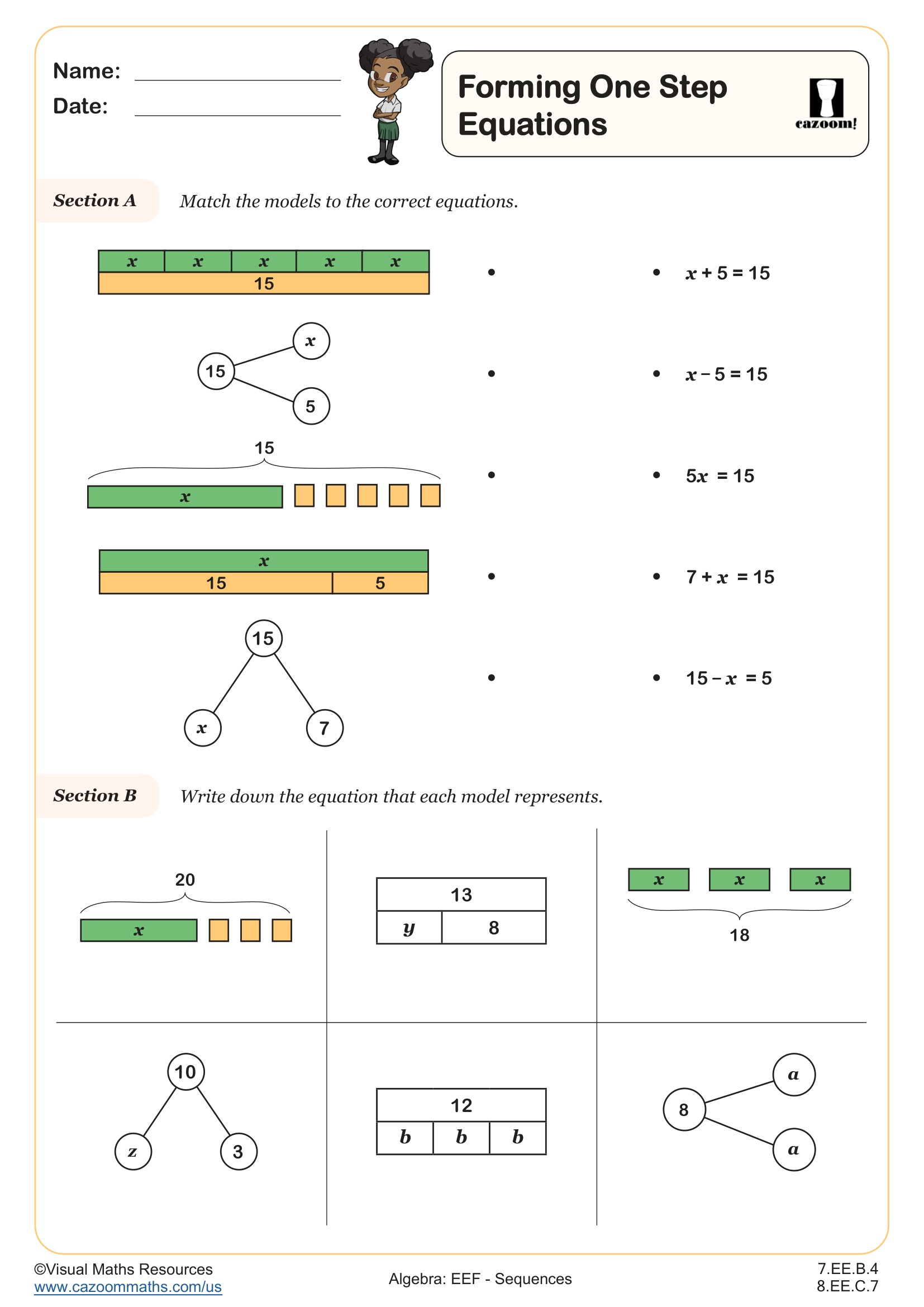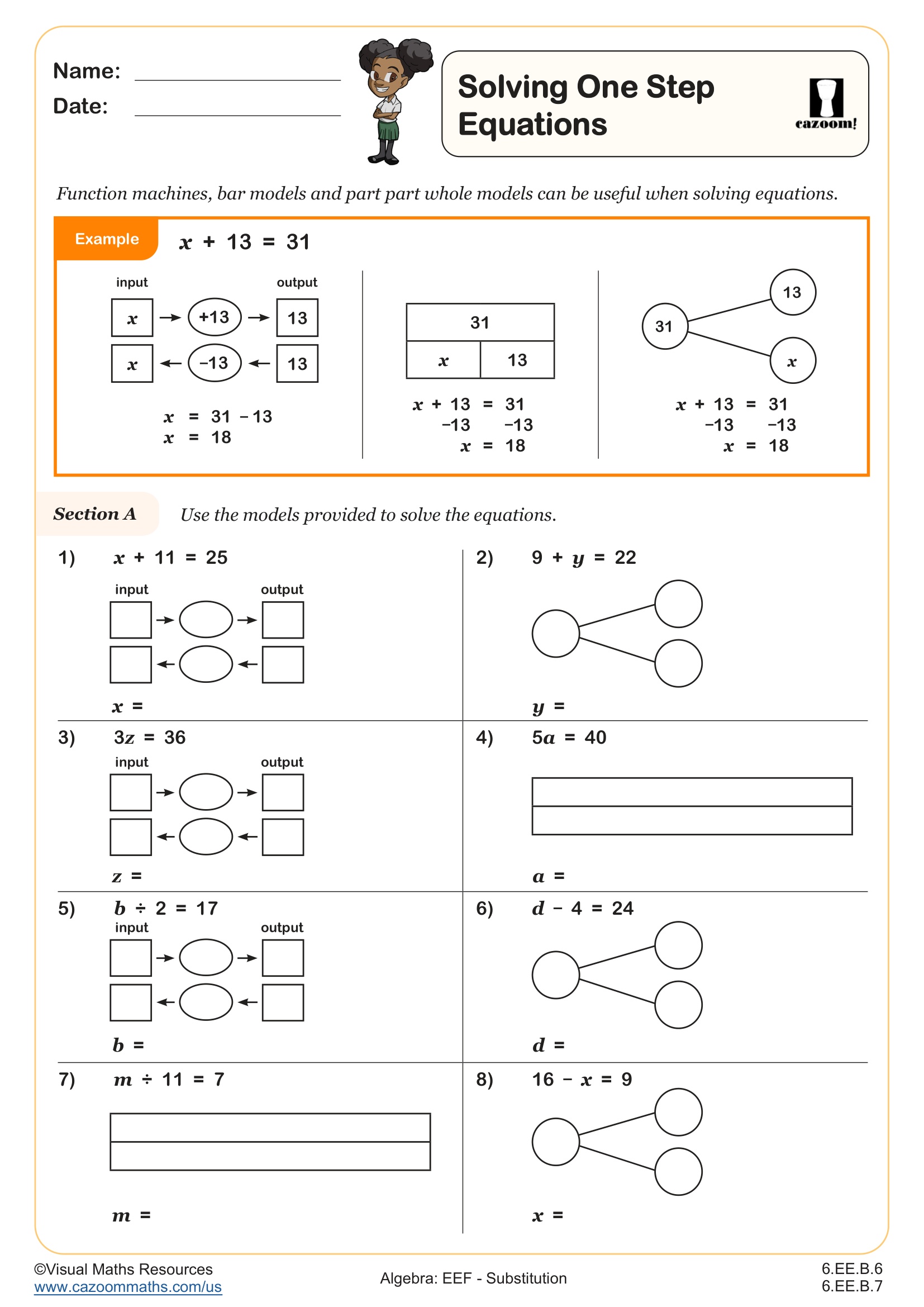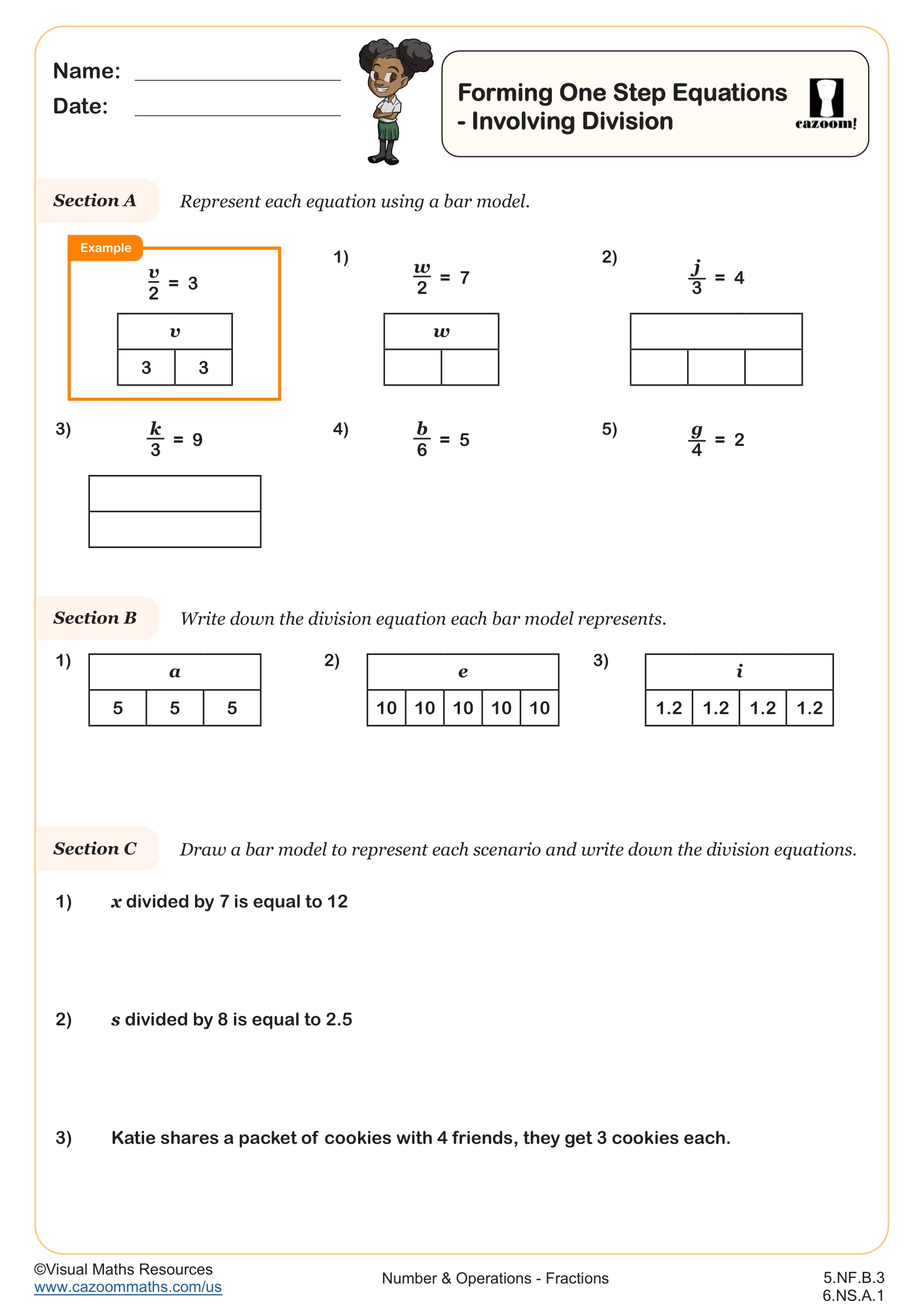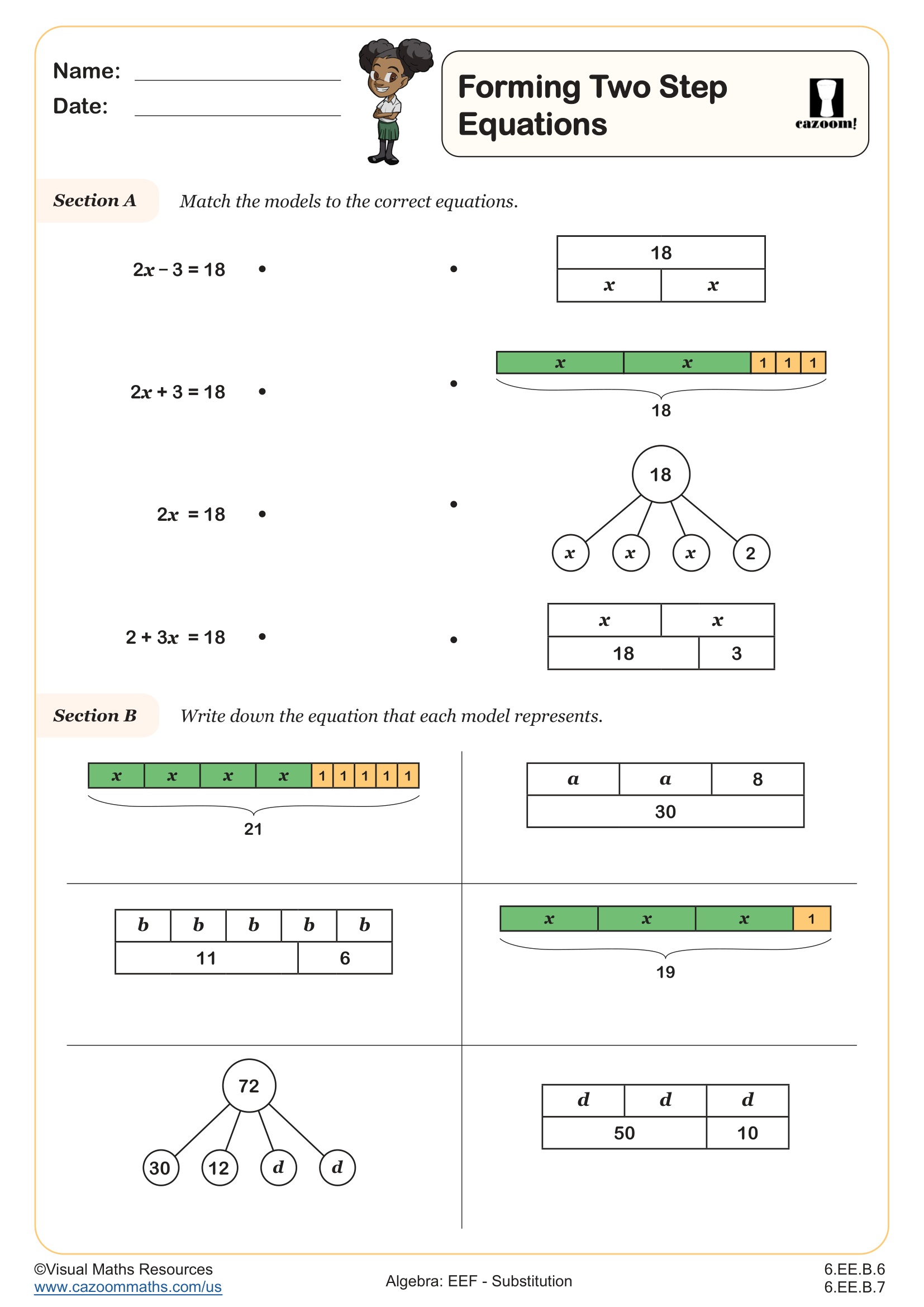Loading...
Back to:
Forming One Step Equations WORKSHEET
Suitable for Grades: 7th Grade, 8th Grade
CCSS: 7.EE.B.4, 8.EE.C.7
CCSS Description: Use variables to represent quantities in a real-world or mathematical problem, and construct simple equations and inequalities to solve problems by reasoning about the quantities. a. Solve word problems leading to equations of the form px + q = r and p(x + q) = r, where p, q, and r are specific rational numbers. Solve equations of these forms fluently. Compare an algebraic solution to an arithmetic solution, identifying the sequence of the operations used in each approach. For example, the perimeter of a rectangle is 54 cm. Its length is 6 cm. What is its width? b. Solve word problems leading to inequalities of the form px + q > r or px + q < r, where p, q, and r are specific rational numbers. Graph the solution set of the inequality and interpret it in the context of the problem. For example: As a salesperson, you are paid $50 per week plus $3 per sale. This week you want your pay to be at least $100. Write an inequality for the number of sales you need to make, and describe the solutions.
Solve linear equations in one variable. a. Give examples of linear equations in one variable with one solution, infinitely many solutions, or no solutions. Show which of these possibilities is the case by successively transforming the given equation into simpler forms, until an equivalent equation of the form x = a, a = a, or a = b results (where a and b are different numbers). b. Solve linear equations with rational number coefficients, including equations whose solutions require expanding expressions using the distributive property and collecting like terms.
Solve linear equations in one variable. a. Give examples of linear equations in one variable with one solution, infinitely many solutions, or no solutions. Show which of these possibilities is the case by successively transforming the given equation into simpler forms, until an equivalent equation of the form x = a, a = a, or a = b results (where a and b are different numbers). b. Solve linear equations with rational number coefficients, including equations whose solutions require expanding expressions using the distributive property and collecting like terms.
Forming One Step Equations WORKSHEET DESCRIPTION
This worksheet is the first in our series that uses varied representations to aid your students' understanding of expressing missing number problems algebraically.
Throughout the worksheet learners will match models (bar models, part whole models and algebra tiles) to one step equations, form equations from models, draw models to represent equations and represent written scenarios such as “I think of a number, multiply it by 5 and it is now equal to 20” as a model and in the form of an equation across 4 sections.
To begin with, students will only focus on three operations: addition, subtraction and multiplication. See our worksheet “Forming One Step Equations Involving Division” to solely focus on representing division.




